Civic education in constitution-making is part of a broader process of public outreach and consultation which is usually undertaken during a participatory constitution-making process. Civic education is used to prepare the citizenry for participation in the constitution-making process. For this purpose, civic education typically covers matters such as (i) the constitution-making process itself; (i) what a constitution is, why it is important, etc.; (i) specific constitutional issues; and (iv) information about the constitutional drafts, as they are produced. Civic education is usually complemented by a public consultation process, as well as an ongoing programme of constitution-making body (CMB) communications and outreach.
Primer
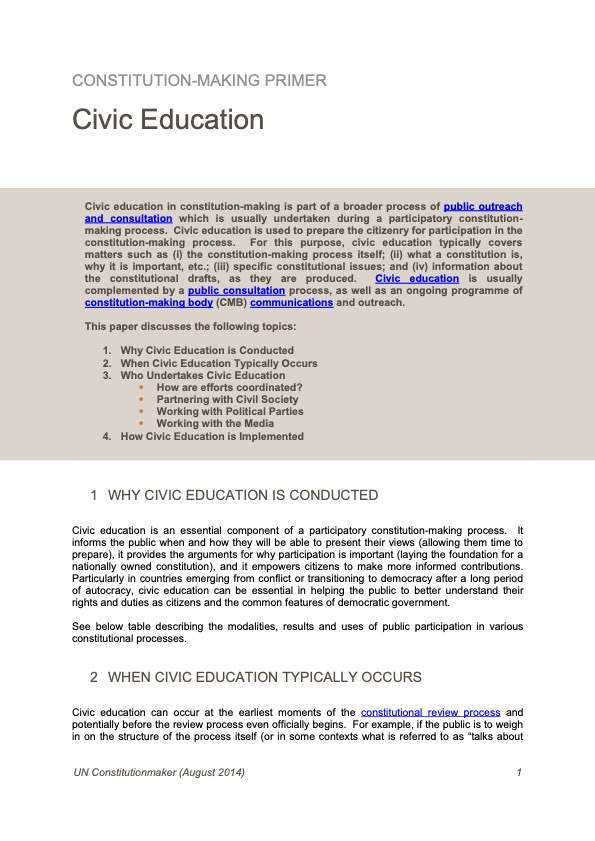
Sample Materials: Curricula
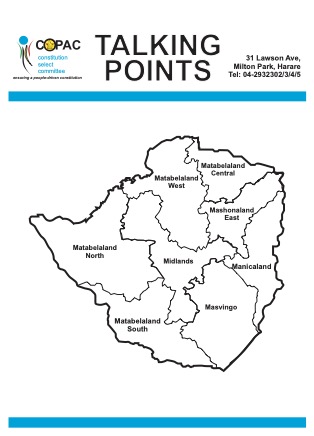
This document sets out talking points and discussion questions relating to the most important provisions of the 2012 draft constitution. Keywords: Draft Constitution, Public Participation, Public Consultation (Material), Example.
Sample Materials: Civic Education Brochures
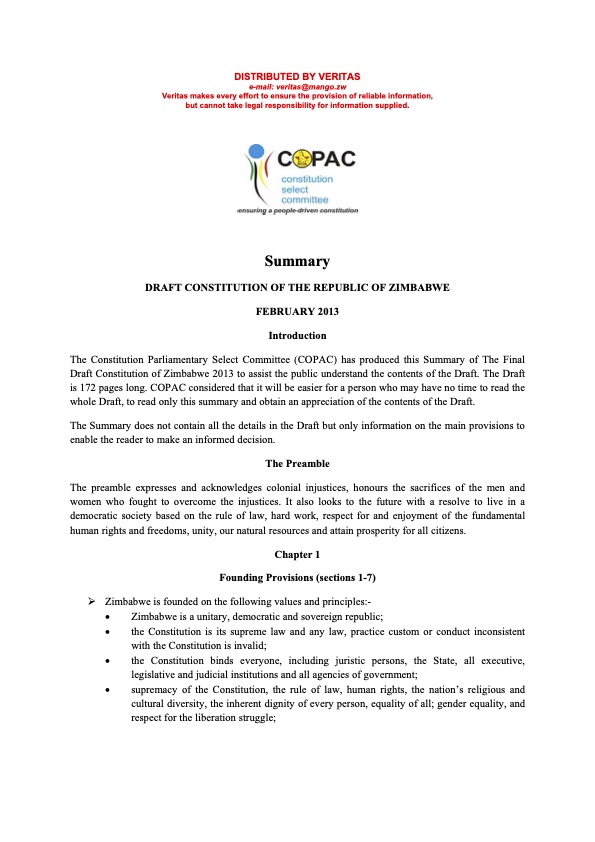
COPAC prepared the attached summary of its January 2013 final draft constitution for civic education purposes, leading up to the March 2013 referendum on the new constitution.
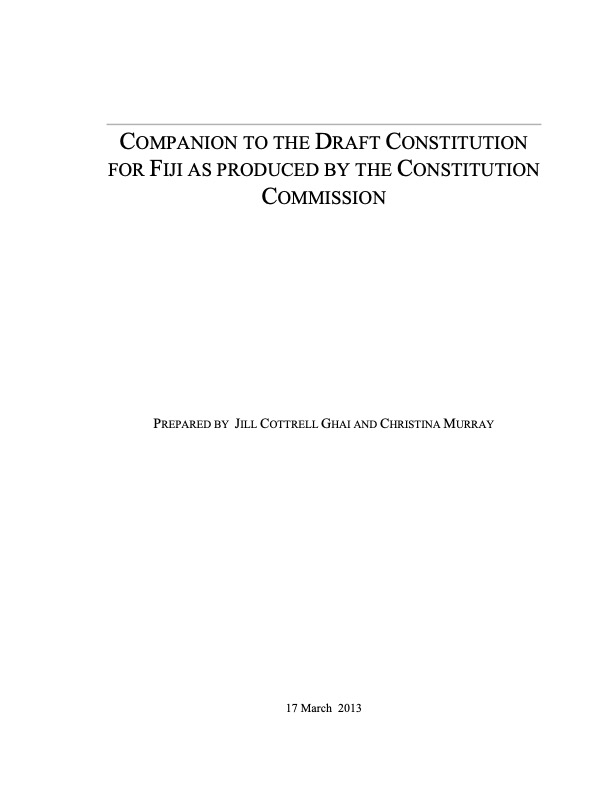
This report was produced as a companion guide to the Fiji Constituiton Commission's Explanatory Report in order to provide more detailed understanding of the draft constitution. The report is an analysis of each chapter of the draft constitution and provides detailed explanations into the provisions contained therein.
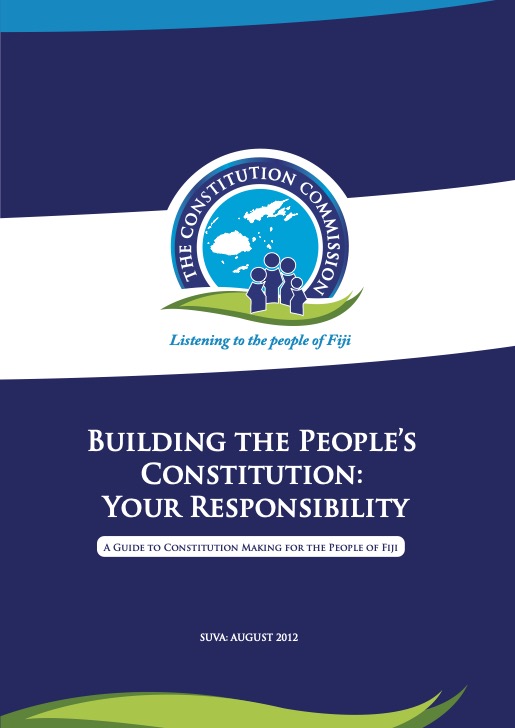
This document is a comprehensive civic education manual provided to the people of Fiji in 2012 to help them understand the the new constitution, and the constitution-making process itself. It canvasses the following topics: the political context that gave rise to the need for a new constitution, the anticipated constitution-making process, the differences between Fiji's three constitutions, the guiding principles of the new constitution, the rights to be included in the new constitution along with the mechanisms through which they will be enforced/upheld, and the systems of government, including the structure of the executive, the design of parliament, the judiciary, and corruption, among other things. The document concludes by addressing the concern that the new constitution may be futile in light of the political coups that were characteristic in Fiji. Finally, the document translates the most important terms referenced therein from English to i-Taukei and Hindi, and includes a copy of the 1997 Constitution.
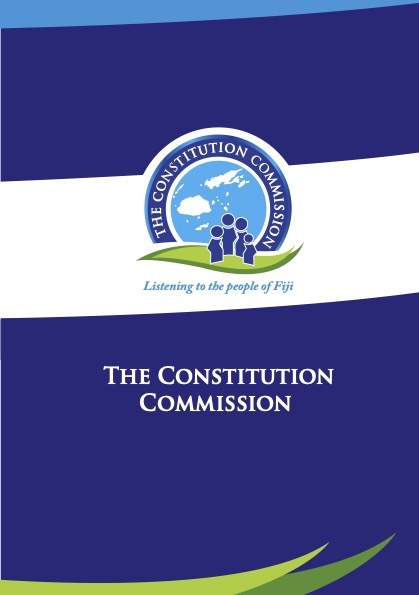
This is the brochure provided to the public to educate them on the Constitution Commission in Fiji. It introduces the members of the Commission, and sets out: the goals of the constitutional process, the minimum standards of the Constitution Commission, the principles and values decreed for the new constitution, the stages of the constitution-making process, how members of the public can make submissions to the Commission, and examples of the issues those submissions may cover.
Keywords: Public Participation, Civic education (material), Communication, Outreach/Public Outreach. Example.

This is a picture guide to the 2012 Somali Provisional Constitution which was prepared for civic education purposes. This file includes (i) the slideshow, and (ii) the presentation guide for for civic educators which references the main messages and relevant articles in the Provisional Constitution for each picture.
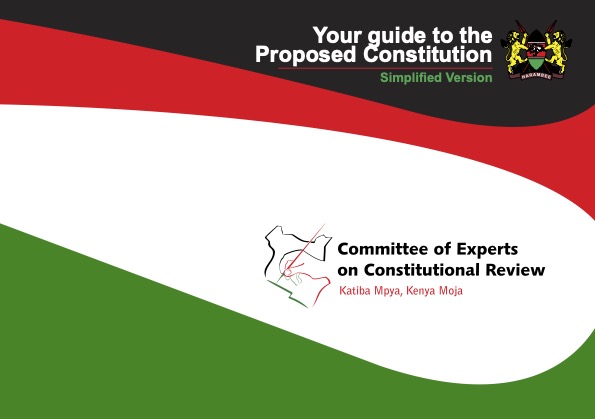
This booklet intends to explain to the public the role and terms of the proposed new 2010 constitution. The report provides general details of the important provisions of the new constitution, including the Bill of Rights and the structure of government. This booklet also provides brief context on the constitution-making process, including the process for bringing the new constitution into effect.
Further Reading
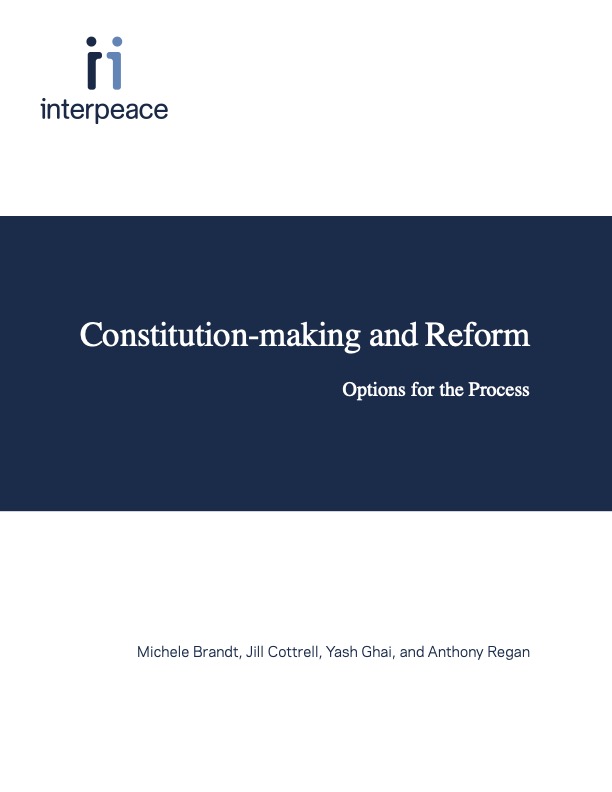
This is a comprehensive guide to constitution-making and reform. The book identifies the tasks that need to be carried out, the procedures that can be used, and who can do them. It is intended for a wide audience and to be a guide for anyone who is engaged in a constitution-making process, or who is interested in improving constitution-making practice. It includes a discussion on the following topics: Emerging guiding principles, Impacts of Adherence to Guiding Principles, The Role of a Constitution Issues of Process Key Components and Issues of the Constitution-Making Process Tasks and Responsibilities in Constitution-Making Assessing the Impact of Constitution-Making Who Does What in the Process Starting the Process Public Participation Administering and Managing the Process and its Resources The Agenda of Constitutional Issues and Generating Ideas on the Issues Debating and Deciding the Issues The Constitutional Text: Coherence and Drafting Adopting and Implementing the Constitution Institutions with Multiple Roles Institutions that Develop Proposals about which Final Decisions are Made Elsewhere Administrative Management Bodies Specialist or Technical Input Institutions Referendums and Plebiscites Civil society and the media and Guidance for the International Community.
